作为世界上最受欢迎的葡萄品种之一,梅洛(Merlot)相对容易种植,梅洛葡萄酒因其果香丰沛、单宁柔和的特质而备受喜爱。与赤霞珠(Cabernet Sauvignon)相比,梅洛葡萄酿制的葡萄酒单宁结构要温和得多,因此有时不具备赤霞珠葡萄酒那种强烈的涩口感。这些特质使得梅洛在世界各地广泛种植,并且最常被用来酿制单一品种葡萄酒(在不混酿的情况下),定位于相对低端的价格区间。事实上,用梅洛酿造上好乃至绝佳品质的葡萄酒并不难,从美国到加拿大,从澳大利亚到南非,从阿根廷到智利以及其他地方,可以说,在世界各地都有数不胜数、酿造优质易饮的梅洛葡萄酒的例子。但是,想要酿造出国际一流水准、能与世界上最伟大的佳酿相媲美的梅洛葡萄酒,则是另一回事儿了(如果你愿意的话也可以说是“另一罐葡萄”)。虽然从华盛顿州到匈牙利,几乎在所有的葡萄酒产区都能找到一些高品质、表现优异的梅洛葡萄酒,但真正具有值得称道的复杂性、结构性和陈年潜力的卓越佳酿,只在三个产地大量出现——波尔多右岸、托斯卡纳、瑞士提契诺地区(Ticino)。别光听我说——只要问问让-克劳德·贝鲁埃(Jean-Claude Berrouet)就知道了,他在让-皮埃尔·莫伊克酒业(Etablissements Jean-Pierre Moueix)担任技术总监四十年有余,一手负责酿造包括帕图斯(Petrus)、卓龙(Trotanoy)、帕图斯之花(La Fleur-Pétrus)、玛格莱娜(Magdelaine)及加州的多明纳斯(Dominus)在内的近乎神话般的顶级佳酿。在我认识他的二十多年间,贝鲁埃曾在许多场合告诉我——鉴于他可以说是(其实就是!)世界上最伟大的梅洛专家,我敢说他的观点很值得我们借鉴。

梅洛:葡萄品种与葡萄酒
梅洛的名字来源于法语单词Merle或Merleau,指的是小黑鸟的深色羽毛,这很容易让人联想起与之相像的梅洛葡萄深色果皮。另一种同样有理有据的假说认为,黑鸟喜欢吃甜美的梅洛葡萄,而这便是葡萄名字的由来。
梅洛葡萄的特点是浆果圆形、呈乌蓝色、果皮很薄,而葡萄串最常见的是大小适中的圆锥形(显然,这是一个笼统的描述,因为形态取决于你观察的是哪个克隆组和生物型)。梅洛属于卡赫门内(Carmenet)葡萄家族(请注意这不是拼写错误:是Carmenet,不是Cabernet),该家族还包括佳美娜(Carménère)、赤霞珠(Cabernet Sauvignon)、品丽珠(Cabernet Franc)和马尔贝克(Malbec)。所有这些品种都是品丽珠的直接或间接后代,而品丽珠是这个相当有名的阵容中的最古老成员。
事实上,直到最近(2009年左右)人们才发现,梅洛的父母植株是品丽珠和夏朗德黑玛格莱娜(Magdeleine Noire des Charentes)。2004年,在法国圣苏利亚克(Saint-Suliac)的一个修道院附近,人们发现了一些夏朗德黑玛格莱娜(先前被认为已经灭绝的品种)老藤在此生长,便对此展开基因研究,结果发现它是梅洛的亲本之一。梅洛也是许多其他葡萄品种的亲本,无论是自然杂交还是人工杂交,如埃德赫纳(Ederena)由梅洛与阿布修(Abouriou)杂交;卡敏(Carmine)由美乐、赤霞珠、佳丽酿(Carignan)杂交——别与名称几乎一致的卡曼尼(Carmina)葡萄混淆,这可是由蓝波特基斯(Blauer Portugieser)和德国黑皮诺(Spätburgunder)杂交而来的;还有白梅洛(Merlot Blanc)由梅洛和白福尔(Folle Blanche)杂交;瑞博(Rebo)由梅洛和特洛迪歌(Teroldego)杂交等等。
梅洛之所以受欢迎,尤其是因为它酿造的葡萄酒果味馥郁、具有肉质感,单宁柔和,易于享用。此外,梅洛葡萄酒的香气和味道宜人,喝起来就像在解读里面都有哪些风味表达,这包括李子、黑加仑、蓝莓、黑莓、可可、牛奶巧克力、香草、咖啡、薄荷,再加上微妙的草本气息。说实话,现在谁不喜欢可可、咖啡、蓝莓呢?所以你这就明白了,为什么上好的梅洛佳酿,其实跟世界上很多其他的酿酒葡萄所具备的黑胡椒、番茄糊、皮革、甘草和烧焦的橡胶味道,都没什么关系。梅洛也是一种出色的混酿葡萄,是更为紧涩、单宁含量更高的赤霞珠之理想搭档(“梅洛的柔滑感填补了赤霞珠在中段口感上的表现空缺”是在世界各地的酒庄里经常听到的一句话),但梅洛与其他葡萄也能很好地搭配,最值得一提的是意大利的桑娇维塞(Sangiovese)。最后同样重要的是,梅洛葡萄酒是无数不同食物的完美搭配,从意大利面、比萨饼到牛排和野味。而梅洛更加柔顺的个性,意味着在任何悠闲自在的BBQ或亲朋好友的聚会上,它都会成为聚会的主角(相对于更为艰涩的卡本内葡萄酒而言)。梅洛与鸡肉、火鸡、鸭肉和猪肉等软质地肉类的甜咸口味菜肴进行搭配,则更是妙趣横生。
梅洛与风土
那么,为什么用梅洛酿制上好甚至是极佳的葡萄酒如此容易,而真正杰出的世界级葡萄酒却仅限在三个相当小的葡萄种植区、在此以外十分罕见呢?再一次,这一切都归结于风土:梅洛葡萄酒的香气和风味差异巨大,更不用说酒体质地和复杂性了,这取决于梅洛的具体种植地块。在与风土概念相关的众多因素中(包括土壤、环境、气候、地形、地质、微生物和人为干预),我认为气候和地质对梅洛尤为重要。简而言之,从土壤上来说,梅洛需要粘土(但粘土不能太多,而且也必须是合适种类的粘土,相比之下,富含砾石的土壤反倒对赤霞珠生长十分理想);从气候上来说,梅洛在炎热的地区根本酿不出真正的好酒。
由于梅洛的果皮较薄,而且容易受到水分的影响,因此选择合适的种植地块对梅洛来说是绝对必要的:不仅要保证良好的排水性(梅洛讨厌“湿脚”,从而导致坐果不畅),而且在底土中还需要数量可观的粘土,以保证在炎热的天气和干旱的年份有足够的保水能力。很明显,在澳大利亚、南非和意大利南部等地常见的强热日照条件下种植薄皮葡萄品种,只会给葡萄种植者和酿酒师徒增挑战。因此,在世界范围内,一些地方的梅洛被连根拔起也就不足为奇了,这些地区的温度太高,无法酿造出优质的葡萄酒(由于气候变化,这种情况现在也发生在曾经较冷的地区);或者在极度寒冷的地区,梅洛无法正常成熟,或者经常无法度过严冬(比如加拿大的尼亚加拉地区,不过在这种情况下,气候变暖可能最终会给安大略省的梅洛爱好者带来些实惠)。
由此可见,对于梅洛葡萄酒,真的要了解其年份。就像赤霞珠葡萄酒一样,品质较差的梅洛葡萄酒都是寡淡酸涩、有股草本味儿(物以类聚,人以群分,所以你也可以说同一家族的葡萄也都差不太多)。事实是,当梅洛葡萄酒品质上佳时(赤霞珠更是如此),可以是非常非常棒的葡萄酒,但当它们不好的时候,品质就会非常非常糟糕。有趣的是(鉴于梅洛和赤霞珠是如此有名和受人喜爱),这两种葡萄都会酿出一些真正佳酿和一些绝对最差的酒,而你一生中都将会喝到。
归根结底,我希望这篇文章(确实很长)能够帮助你了解那些梅洛表现最好的风土,从而让你能够挑选出那些基本不会出错的葡萄酒。
梅洛在法国和意大利
法国波尔多右岸的波美侯(Pomerol)和圣埃美隆(Saint-Emilion)产区——尤其是波美侯——是世界上最好的梅洛葡萄酒的产地。只有意大利能生产足够多的梅洛佳酿以挑战法国在这一特定领域的领先地位。
法国
如果不考虑其他原因、只考虑生产梦幻般梅洛佳酿的绝对数量,那么必须要承认,波尔多的波美侯和圣埃美隆的的确确是梅洛葡萄酒王中之王。诸如宝利嘉酒庄(Bellegrave)、色丹迪美酒庄(Certan de May)、卡农酒庄(Canon)、卡农嘉芙丽酒庄(Canon La Gaffèliere)、富尔泰酒庄(Clos Fourtet)、萨乐斯酒庄(de Sales)、嘉仙酒庄(Gazin)、拉弗嘉仙酒庄(La Fleur-Gazin)、乐王吉酒庄(L’Evangile)、康赛扬酒庄(La Conseillante)、帕图斯之花酒庄(La Fleur-Petrus)、维奥莱酒庄(La Violette)、里鹏酒庄(Le Pin)、帕图斯酒庄(Petrus)和卓龙酒庄(Trotanoy)等等——上述这些酒庄选出几个就能凑成一个令人难以置信的长名单了,我甚至还没提到欧颂酒庄(Ausone)、白马酒庄(Cheval Blanc)、花堡酒庄(Lafleur)和老色丹酒庄(Vieux Château Certan)这些大名鼎鼎的酒庄。在我看来,所有这些更多以品丽珠而不是梅洛的存在感作为标志的,而在老色丹酒庄,亦是以赤霞珠的存在为标志的——均产出令全世界酿酒师艳羡不已的顶级佳酿。事实上,在大多数情况下,100%的梅洛葡萄酒在法国是很少见的:即使是在右岸,梅洛也经常与10-20%的品丽珠进行混酿。例如,很少有人意识到,直到21世纪初,即使是帕图斯——人们普遍认为这是登峰造极的100%梅洛葡萄酒,其实每十年有大概三年的年份混入了5%左右的品丽珠。但最重要的是,法国右岸的葡萄酒不仅品质绝佳,而且还能非常清晰地表达出它们所来自的不同风土特性(比如,萨乐斯的高沙质土壤和帕图斯之花更多砾石粘土的土质之区别,使得这两款梅洛葡萄酒虽然相隔很近的车程,但却有天壤之别)。不过,尽管当下在法国梅洛品种获得惊人的成功,但它的情况并不总是一帆风顺的。
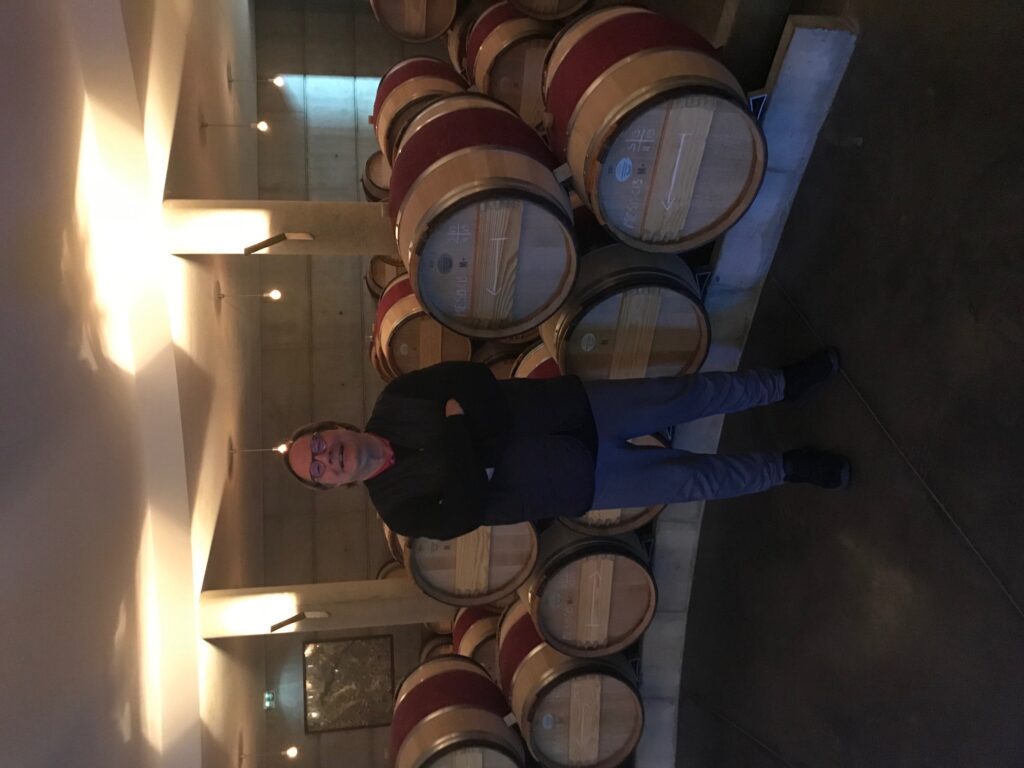
事实上,对于这样一种广受欢迎、且坦率讲非常重要的酿酒葡萄,在法国现存的官方文献资料比较有限,而且也没有记载到如此久远的年代。法国官方首次提到梅洛(葡萄酒)的历史只能追溯到1784年,当时法国当地政府官员认为梅洛是该国最好的葡萄酒之一。最有可能的情况是,在此之前的数个世纪、甚至数千年间,梅洛(葡萄)很有可能已经挂(就是字面意思!)在意大利和法国的郊野乡村了。毕竟,古罗马人的比图里卡葡萄(Biturica)曾被认为是赤霞珠,而梅洛也很可能在同一时间出现在该地区,不过很遗憾——当谈到两千多年前发生的事情时,很难说有绝对的把握。而在十九世纪和二十世纪上半叶,梅洛的受欢迎程度急剧上升,它从主要作为调和剂,用来柔化两种不同的卡本内葡萄酿造的酸涩葡萄酒,转变为有能力单飞的葡萄品种,并酿造出能够取得巨大商业成功的单一品种葡萄酒。但两个毁灭性事件的发生,几乎让梅洛彻底退出舞台。在1956年,波尔多经历了一场几乎可称为传奇性的深层冻害,几乎所有的梅洛葡萄藤都被砍掉了——因此,波尔多很少有真正意义上的梅洛超老藤(Très Vieilles Vignes),大部分都是在那之后种植的。更为糟糕的是,在1956年的霜冻之后,重新种植该品种的尝试却因为严重的腐烂问题而受阻。事情变得如此糟糕,以至于法国政府彻底禁止种植新的梅洛葡萄藤,以阻止腐烂的蔓延。这一禁令直至1975年才被最终取消,此后梅洛除了遇到一些偶发性的小问题之外,受欢迎程度一直在飙升。
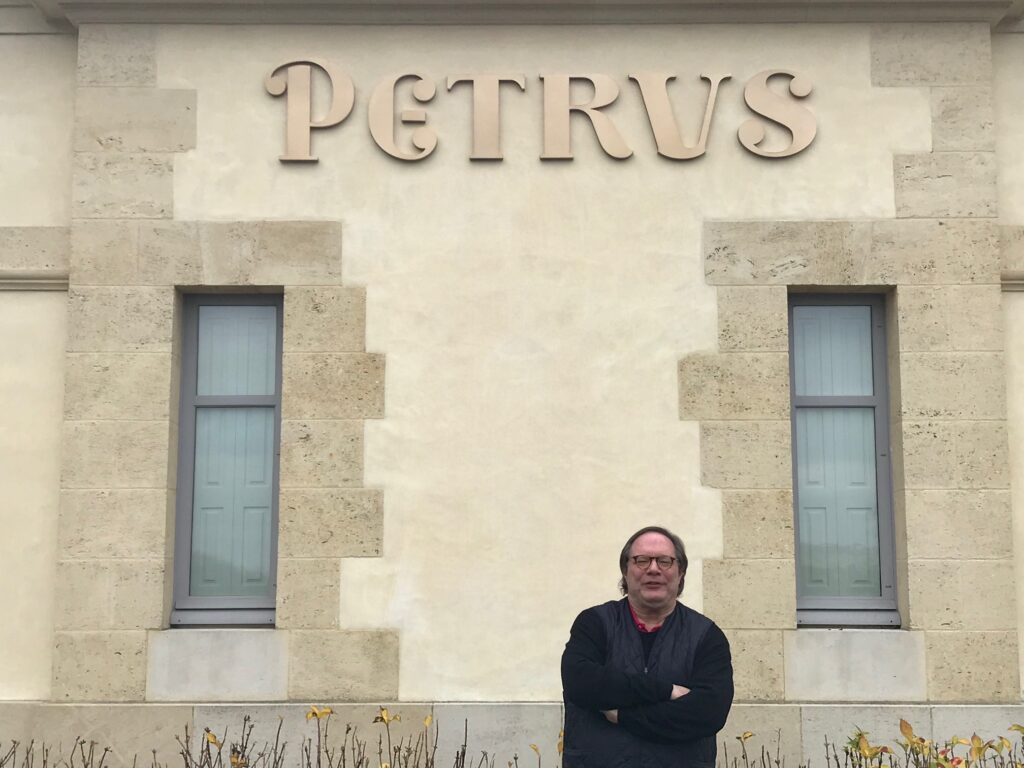
意大利
波尔多右岸很少有100%的梅洛葡萄酒,与之不同的是,意大利梅洛葡萄酒往往是100%单一品种的。然而,意大利的梅洛葡萄酒也只是在相对较晚的时候才开始流行。早在19世纪之前,个别贵族家庭就已经在意大利零星地种植梅洛,但直到该世纪末,意大利酿酒师才开始在全国范围内大规模种植梅洛。但是,在整个20世纪的大部分时间里,梅洛只在意大利东北部得以真正流行——主要是威尼托和弗留利-威尼斯朱利亚地区(Veneto and Friuli Venezia Giulia)。在此之后的1970年代初,它迅速在超级托斯卡纳(“超托”,Supertuscan)混酿葡萄酒中享有一席之地,这些顶级超托葡萄酒产于基安蒂(Chianti)等久负盛名的产区之外,在那里,国际品种(例如梅洛)并未被纳入视线(或者说不被允许)。但超托着实品质拔群,并自此享誉国际:今天,它们已跻身意大利最好的葡萄酒之列。显然,并不是所有的意大利梅洛葡萄酒都令人难忘:许多葡萄酒充其量是索然无味,而最糟糕的则品质低劣。仅有极少数例外——我想到了格拉芙内(Gravner)和米亚尼(Miani)——威尼托和弗留利-威尼斯朱利亚地区的梅洛葡萄酒虽然在当地很受欢迎,却未能在当地以外打响(威尼托和弗留利-威尼斯朱利亚地区又冷又多雨,梅洛在那里不会有什么好的表现)。在意大利的中部和南部,葡萄的生长情况也没有好到哪里去:飞行顾问酿酒师们在推动梅洛葡萄的种植,希冀他们去过的任何地方都能复制他们的酿酒配方,但是在许多酒庄,这种葡萄已经被扯掉或用于嫁接了(例如:西西里太热了,以至于这种独特的酿酒葡萄几乎无法表现出任何值得关注的特性)。当然,热量只是佳酿生产方程式的一部分,梅洛之所以未能在几乎其他任何地方产出像波美侯一样出色的葡萄酒,其原因是多种多样的。由于尚不完全清楚的原因,梅洛酒庄在托斯卡纳地区表现出色:不光在托斯卡纳海岸上——主要在保格利镇(Bolgheri)附近,并且产区以相同的名称命名,实际上那里阳光明媚,有时会很热,但在该地区较为凉爽、阳光较少的内陆地区——如经典基安蒂(Chianti Classico)及周边地区,梅洛也能表现得如明星般闪耀——从土壤上看,世界著名的马赛托酒庄(Masseto)确实拥有让帕图斯和小部分波美侯地区闻名遐迩的蓝色粘土,所以这可能也无妨。无论如何,托斯卡纳出产的世界级梅洛葡萄酒的数量仅次于法国右岸的葡萄酒,这一点是无可争议的:例如杜马尼酒庄(Duemani)、玛奇奥酒庄(Le Macchiole)的梅索丽(Messorio)、马塞托酒庄(Masseto)的马赛托(Masseto)、皮特罗酒庄(Petrolo)的加拉托纳(Galatrona)、圣朱斯托酒庄(San Giusto a Rentennano)的雷寇玛(La Ricolma)、图丽塔酒庄(Tua Rita)的乐迪加菲(Redigaffi)等葡萄酒,毋庸置疑,这些不仅仅是世界上排名前25-30的梅洛葡萄酒,而且在全球最伟大的红葡萄酒序列中亦能拔群出萃。
本报告中的葡萄酒由本人精选,并于2021年1月在上海武康园餐厅举行的一次梅洛佳酿特别品鉴晚宴上得以品尝。
The wines
1998 Castello di Ama Merlot Toscana Rosso Apparita 95
Luminous deep ruby. Cassis, black cherry, violet and minerals on the very refined, pure nose. Very pure and concentrated, with excellent cut and vinosity too to its dark fruit, bitter chocolate, herb and licorice flavours. Extremely fine-grained and light on its feet, yet this gorgeous and still very young wine communicates a strong presence of extract, harmonious acidity and polished tannic spine, a combination that will guarantee future aging. Not a blockbuster but refined and suave, as is highly typical of Apparita. A beautiful wine. Drinking window: now-2034
2016 Petrolo Toscana Rosso Galatrona 89
Bright ruby. Musky nose combines blueberry, blackberry, violet, herbs, and spices, plus obvious slightly funky undertones of game and leather. Suave and silky, with a somewhat wild quality to its concentrated flavors of small dark fruits, licorice, minerals and leather. Finishes long with nobly polished tannins and harmonious acidity. I normally love Galatrona, which I think is one of the world’s top dozen or so Merlot wines, but this specific vintage strikes me as being a little gamey, and may not be for everyone owing to its slight funkiness. Extended aeration helped bring out more intense and purer fruit and violet nuances, but it’s never a good sign when the person next to you turns over at first sip and asks “Is this a natural wine”? (in fact, Petrolo follows organic viticulture and minimal intervention practices). I have never had this problem with Petrolo’s wines before, so I am hoping this was a one time thing. In my experience, Galatrona is normally always a beautifully clean, pure, wine that ages magnificently well and that I regularly score in the 93-97 range. Drinking window: 2024-2032.
2012 Château Le Bon Pasteur Pomerol 91
Medium-dark saturated ruby. Bright aromas and flavours of blackberry, violet, coffee, pepper and mint. Then juicy, saline and very smooth, with an almost candied quality to its dark fruit flavors. Neither especially fleshy nor the last word in complexity, but very suave and well-balanced, finishing long and savory. A very good example of the simple but very pretty style of Merlot from the Maillet area of Pomerol, this wine denotes quite a bit of class. Drinking window: now-2030.
2008 Château La Conseillante Pomerol 96
Vibrant good full ruby. Highly perfumed and beautifully precise aromas and flavours of blueberry, blackcurrant, peppery herbs, minerals and underbrush. Then virtually weightless, with outstanding focus and inner-mouth aromatic perfume and noteworthy density. Finishes very subtle and long, with refined tannins and repeating notes of liquid minerality and explosive violet perfume. The La Conseillante wines of the last half of the 2000s were some of the purest, most beautiful wines ever made at the property (and of all Pomerol actually), then things changed and wines have become bigger and more fleshy. Whatever makes you happy, I guess. Drinking window: now-2038.
2006 Miani Merlot Friuli Colli Orientali NR
Full, deep ruby-red. Polished aromas of blackberry, violet and licorice with sexy oak tones of bitter chocolate, cocoa powder and espresso are unfortunately ever so slightly marred by cork taint. The wine seemed to be wonderfully velvety and rich, with outstanding verve to the primary black fruit, violet and licorice flavors, but clearly the wine was impossible to appreciate as it deserved to be. Given the wine was sullied by cork taint, I did not score it: the NR stands for “not rated”.
2011 Château l’Evangile Pomerol 94
Fully saturated ruby. Broad, pure aromas of black fruit syrup, licorice, cocoa, roast coffee and candied violet. Dense, creamy and impressively deep, showing a velvety texture and noteworthy sweet ripeness to its ultra-concentrated black and blue fruit flavours. Impeccably balanced and downright plush, you can tell 2011 was a hot year. That said, the tannins are splendidly polished, and the very long, lush, suave finish is a marvel. I prefer my wines on the side of refinement and nuance rather than that of opulence and lusciousness, but it’s hard to argue with how good this wine is. Drinking window: now-2040.
2011 Tua Rita Toscana Rosso Redigaffi 98
Fully saturated ruby. Knockout aromas of blueberry, red cherry, violet, minerals, coffee, milk chocolate and aromatic herbs. Suave, juicy and attractively sweet, with rather Bordeaux-like flavours of dark berries, herbs and spices but with southern Tuscany’s lusciousness. Multilayered and exceptionally deep, this ultra-complex, rich wine is amazingly light on its feet and boasts truly remarkable clarity and cut (especially considering that 2011 was a hot year). The long, rising finish features very smooth tannins and harmonious acidity. Long on personality, this is an absolutely knockout Redigaffi: simply put, one of the ten or twelve best Italian red wines I have had from the 2011 vintage. Drinking window: now-2036.
1999 Château Trotanoy Pomerol 98
Deep luminous ruby. The deep, perfumed nose combines blackcurrant, raspberry, fruity peppercorn, licorice, cocoa and minerals all lifted by a strongly fragrant violet topnote of exceptional purity. Then pure silk in the mouth, the 1999 Trotanoy boasts an almost painful intensity and soil-driven precision to its flavours of black and blue fruits, spices and minerals. A Trotanoy that is not just about power, but of real finesse and thrust too. The finish kept me company while I was walking home hours later. An outstanding Trotanoy that had been marvelously well cellared, this is the best bottle of 1999 Trotanoy I have ever had. Memorable wine. Drinking window: now-2045.
2004 Ornellaia Toscana Rosso Masseto 99
Bright ruby-red. Multidimensional aromas have a decadent quality with thick, ripe blackcurrant, black cherry, brown spices, bitter chocolate, minerals and violet notes literally exploding out of the glass; this has an air-dried, almost Amarone or Port-like quality but is amazingly refined too. Sweet, creamy and deep, yet focused and energetic in spite of its ripe, velvety texture. The dark fruit and spice flavors carry through on the extremely long, vibrant finish featuring smoother than silk tannins and building sweetness. One of the best Massetos ever made, this is just an unforgettable mine and I’m probably being stingy giving it “only” 99 points. Drinking window: now-2040
1995 Petrus Pomerol 99
Bright medium ruby. Very perfumed and pure on the nose, with expressive red and black fruits, sweet spices, cocoa and flowers jumping out of the glass. Then extremely smooth and suave in the mouth, with unbelievable class to the dark berry, coffee, Oriental spices and bitter chocolate flavors; uncommonly for this Pomerol of nearly mythical proportions, the 1995 Petrus boasts a penetrating minerality that contributes to the impression of precision, verve and lightness of being. The finish is smooth and classic, with noble tannins and lingering violet and cocoa echoes. Not the most powerful Petrus you’ll ever taste, but a paragon of balance and gracefulness, it’s simply impossible to describe just how seamless and weightless this beautiful wine is, with tannins that are so unique in their “touch” that I cannot but score the wine as high as I have. Drinking window: now-2045.

 English
English
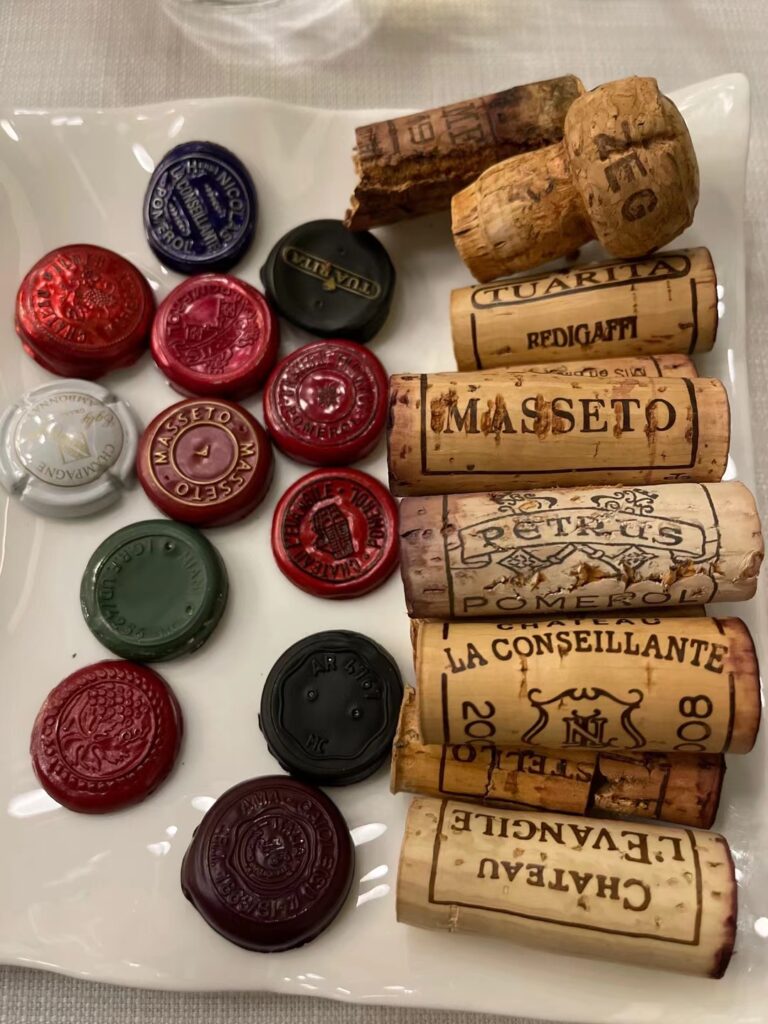
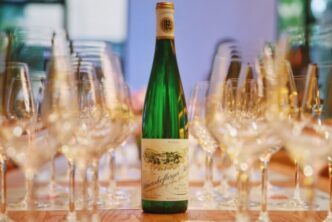
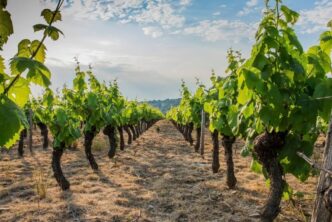
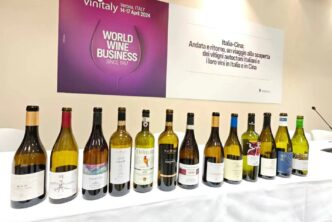

Hi Ian, you are apparently already on a roll. 😉
I haven’t tasted many of the above wines, I also don’t have the income of a top footballer, but we recently drank a 2018 Merlot and that was a first release, a new wine from the Chianti Classico region and I found it simply amazing. You obviously know Castello dei Rampolla and Liu ‘is their new 100% Merlot, raised on cocciopesto and that would be a kind of loam-cement type of amphora. Great wine and much more accessible than their Cabernet wines Sammarco and d’Alceo.
All the best,
Werner